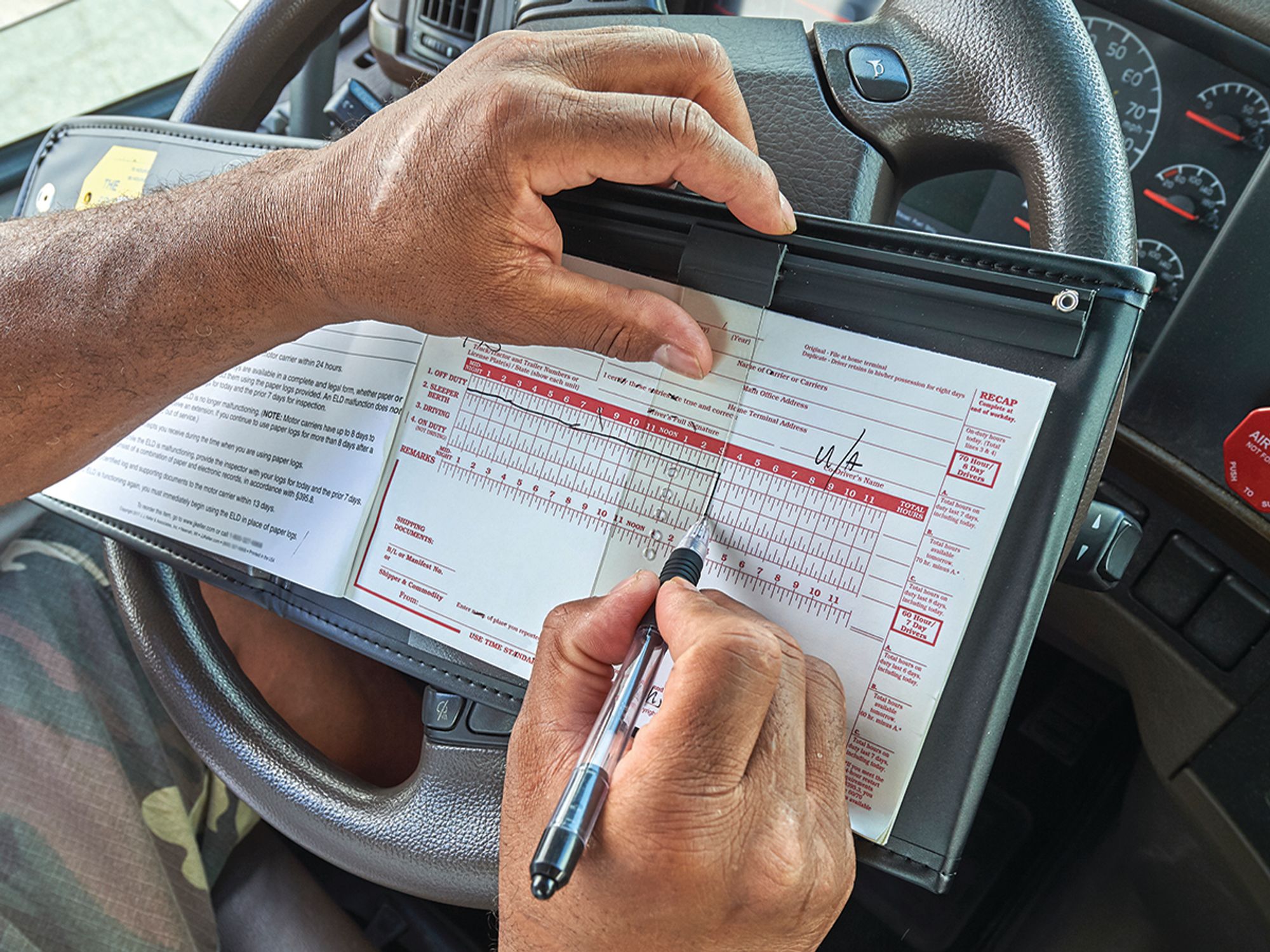Malfunction procedures

- When an ELD no longer works correctly, the driver must alert the carrier, immediately reconstruct the logs for the current day and previous seven days, use paper logs in the interim, and be able to provide records for the eight days when asked.
- Before a roadside inspection, any reconstructed records must be in the driver’s possession since they cannot be sent to enforcement officials by the carrier during the inspection.
If an electronic logging device (ELD) malfunctions, the driver must:
- Notify the motor carrier in writing (electronic communication is acceptable) within 24 hours unless the ELD system automatically notifies the carrier;
- Reconstruct logs for the current day and previous seven days;
- Continue to manually prepare paper logs until the ELD is fixed; and
- Provide the reconstructed records and a current and accurate paper log to enforcement upon request.
Once notified by the driver that a device is no longer functioning, the carrier has eight days to repair or replace it. If the device cannot be repaired or replaced within eight days, the carrier needs to request an extension through the local Federal Motor Carrier Safety Administration (FMCSA) office or through FMCSA’s extension request email (ELD-Extension@dot.gov) within five days of the malfunction. The process is detailed in 49 CFR Part 395.34.
To reconstruct the previous seven days, the driver can use:
- The display to show any logs the system can display and transfer,
- System printouts or PDFs of any of the previous days’ logs available in the system, or
- Blank logs the driver is required to carry.
If the ELD cannot display any records and the system cannot immediately provide printouts or PDFs of the previous seven days, the driver will need to use blank paper logs to reconstruct all previous seven days and the current day. This means that if the driver is using an ELD and has the minimum number of logs required (eight), the driver will have to use all the blank logs for that day and the previous seven days. As a result, the driver will need to locate additional logs by the next day if the device is not repaired or replaced.
This is why some carriers are choosing to have their drivers carry 10 to 30 blank logs, rather than the minimum of eight.
Should a roadside inspection occur, the driver must be able to present records for the current and previous seven days. The records can be a mix of electronic records, printouts, PDFs, and regular paper logs.
The driver cannot ask the company to send the previous seven days’ records to the officer during a roadside inspection. That driver must complete the reconstruction before the inspection begins and be in possession of the current day’s and previous seven days’ records during the inspection. Offering to send the officer the previous seven days’ records is not the same as possessing them.
While similar to a malfunction, a diagnostic event is different. If a device has suffered a “data diagnostic event” or “data inconsistency,” the driver should follow the manufacturer’s instructions on what must be done to deal with the event.
